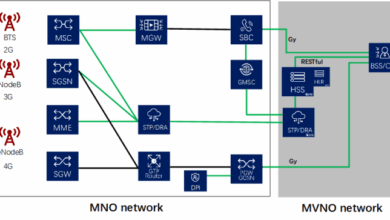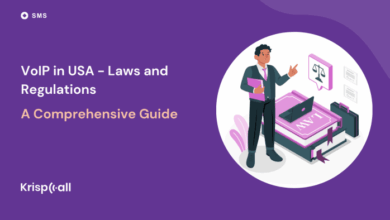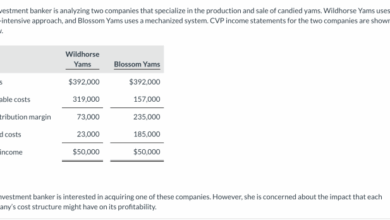UK Rolls Out New VoIP Numbers A Deep Dive
UK rolls out new VoIP numbers, signaling a significant shift in the telecommunications landscape. Voice over Internet Protocol (VoIP) technology is rapidly evolving, and these new numbers offer exciting possibilities for businesses and consumers alike. The UK’s move reflects broader global trends, and we’ll explore the motivations behind this rollout, its impact on various stakeholders, and the potential future of VoIP in the UK.
Understanding the different types of VoIP numbers available, from basic to premium options, will be key to understanding this rollout. A detailed look at the technical infrastructure and security considerations is crucial. This new development will also affect the regulatory framework governing VoIP in the UK, so let’s explore the potential impacts.
Introduction to UK VoIP Numbers

VoIP, or Voice over Internet Protocol, is a technology that transmits voice calls over the internet instead of traditional phone lines. This method leverages the internet’s infrastructure for communication, offering significant cost savings and flexibility compared to traditional landline or mobile phone services. It’s rapidly transforming the telecommunications landscape worldwide, including the UK.The UK telecommunications market is currently experiencing a period of significant change.
Traditional landline phone services are declining in popularity, while mobile phone usage continues to grow. This shift presents opportunities for innovative telecommunication solutions like VoIP. The emergence of new VoIP numbers in the UK reflects this changing environment and addresses the need for affordable and flexible communication options.
Significance of New VoIP Numbers in the UK Market
The introduction of new VoIP numbers in the UK addresses the evolving needs of businesses and consumers. These numbers offer a range of benefits, including lower call costs, enhanced features, and greater flexibility in managing communications. This is especially appealing to small businesses, entrepreneurs, and individuals seeking cost-effective communication solutions.
Types of VoIP Numbers Available in the UK
Several types of VoIP numbers are available in the UK, catering to different needs and budgets. These include local numbers, national numbers, and toll-free numbers. Each type has its own unique advantages and disadvantages.
Benefits and Drawbacks of Different VoIP Number Types
| VoIP Number Type | Benefits | Drawbacks |
|---|---|---|
| Local Numbers | Appear as originating from the same area code, enhancing local presence. Often cheaper than national numbers, especially for calls within the same area code. | May not be suitable for businesses operating across multiple areas. If not carefully managed, local numbers might create a misleading sense of local presence if the service provider isn’t local. |
| National Numbers | Offer broader coverage throughout the UK. Businesses can establish a presence across the country without the limitations of local area codes. Typically more versatile in terms of call routing and handling options. | Generally more expensive than local numbers, especially for calls outside the specific area. Could require careful management of call routing for efficiency. |
| Toll-Free Numbers | Customers can call without incurring any charges on their end. Ideal for businesses wanting to attract customers or encourage customer support calls. These numbers often have specific features for call handling and reporting. | Higher costs compared to local or national numbers, due to the toll-free service overhead. The cost difference is significant and should be considered in budgeting. |
Reasons for Rollout
The UK’s rollout of new VoIP numbers signifies a significant shift in the telecommunications landscape. This initiative reflects a broader trend towards digital transformation and the increasing adoption of VoIP technology. It’s crucial to understand the motivations behind this change, as it impacts both consumers and businesses.The primary drivers behind the rollout are multifaceted, encompassing technological advancements, evolving consumer preferences, and a need to modernize the existing telecommunications infrastructure.
The move to VoIP offers enhanced flexibility and cost-effectiveness for both businesses and consumers.
Key Drivers of the Rollout
The rollout is primarily driven by the desire to adapt to the ever-evolving telecommunications market. Modern consumers increasingly rely on VoIP services for both personal and business communications. The demand for flexible, cost-effective, and readily accessible communication solutions has fueled this transition. Furthermore, the rollout aims to leverage the advantages of VoIP, which often include lower call costs and enhanced features.
Impact on Existing Infrastructure
The introduction of new VoIP numbers necessitates adjustments to the existing telecommunications infrastructure. This includes upgrades to network equipment and systems to accommodate the increased data traffic associated with VoIP calls. The rollout may also necessitate modifications to existing billing and customer service processes to seamlessly integrate VoIP services. The migration to VoIP could potentially streamline the infrastructure, enabling more efficient routing and handling of calls.
However, challenges in ensuring compatibility between VoIP and legacy systems may arise.
Comparison with Previous Initiatives
Previous initiatives in the UK and globally, such as the introduction of mobile networks and the adoption of internet protocols, have paved the way for the current VoIP rollout. The UK’s approach shares similarities with other countries’ modernization efforts, while also showcasing unique characteristics tailored to the UK’s specific market needs. It’s important to acknowledge that each previous initiative had its own set of challenges and opportunities.
For example, the transition to mobile networks faced concerns about coverage and infrastructure costs, which serve as important precedents for the current VoIP rollout.
Consumer Benefits, Uk rolls out new voip numbers
The anticipated consumer benefits of the new VoIP numbers are substantial. Consumers can expect lower call costs, improved call quality, and increased flexibility in communication options. VoIP offers a wider range of features, such as international calling capabilities, advanced call management tools, and the ability to integrate with various communication platforms. Furthermore, the rollout could lead to a more diverse range of communication choices.
Cost Implications
The cost implications for businesses and consumers are varied and depend on individual circumstances. Businesses might incur costs associated with updating their communication systems and training staff. Consumers might see lower monthly call costs or reduced long-distance charges. However, potential costs could also arise from the need to acquire new equipment or software to use VoIP services.
The initial investment required to adapt to the new VoIP infrastructure may vary significantly depending on the scale of the business or individual’s usage. A cost-benefit analysis for each user is crucial.
Impact on Businesses and Consumers: Uk Rolls Out New Voip Numbers
The rollout of new UK VoIP numbers presents exciting opportunities for businesses and consumers alike, revolutionizing communication strategies and potentially lowering costs. This shift promises a more streamlined and adaptable approach to phone services, but it’s crucial to understand the potential impacts and challenges. Understanding how businesses and consumers can leverage these new numbers, as well as the implications for existing systems, is key to maximizing the benefits of this technological advancement.
Business Use Cases
New VoIP numbers offer a plethora of possibilities for businesses, from streamlining operations to enhancing customer service. Businesses can tailor their communication strategies to specific needs, leading to improved efficiency and customer engagement. This includes establishing dedicated lines for specific departments, marketing campaigns, or customer support.
- Small Businesses: Small businesses can utilize VoIP numbers for cost-effective communication, potentially reducing their monthly phone bills. They can establish a professional image with a dedicated business line, even if operating from a home office. A dedicated number allows them to effectively separate personal and business communications.
- Large Enterprises: Large enterprises can segment their customer service, sales, or marketing departments with distinct VoIP numbers. This allows for improved tracking of call metrics, better management of customer inquiries, and targeted marketing campaigns. This segmentation improves the efficiency of communication and streamlines customer interactions. Advanced call routing systems can also be integrated to manage calls efficiently, improving customer satisfaction.
The UK’s rollout of new VoIP numbers is definitely interesting, but it’s worth considering the broader context. Recent developments, like Verisign’s wildcard service, are bringing a call to stop a lawsuit, verisign wildcard service brings call to stop lawsuit. This could significantly impact how VoIP providers operate and potentially affect the UK’s new number rollout in the long run.
It’s a complex web of interconnected issues, so keep an eye on the evolving situation as the new VoIP numbers become more widespread.
Consumer Applications
Consumers can also benefit from the versatility of VoIP numbers. These new numbers provide options for enhanced privacy and control over personal communication.
The UK’s rollout of new VoIP numbers is interesting, especially considering the recent partnership between MCI and Microsoft on office conferencing solutions, like mci microsoft partner on office conferencing. This collaboration suggests a potential integration of these new VoIP numbers into future Microsoft Office conferencing tools, which could streamline communication and improve user experience. Ultimately, the new VoIP numbers will likely become a key component in the UK’s modern communication landscape.
- Privacy and Control: Consumers can use VoIP numbers for personal communication without disclosing their personal mobile numbers. This enhanced privacy is particularly appealing to those concerned about spam calls or unwanted solicitations. They can easily manage incoming calls, ensuring a better control over their communications.
- Simplified Communication: Consumers can leverage VoIP numbers for managing different aspects of their life. This includes using a separate number for work-related calls, social media, or online interactions, allowing for a clearer distinction between various communication spheres.
Implications for Existing Systems
The introduction of new VoIP numbers necessitates a careful consideration of existing phone systems and services. Businesses may need to adapt their existing phone systems to integrate these new numbers, which could involve updating software or upgrading hardware. Existing call centers and CRM systems will also need to be updated to accommodate the new numbering structure.
- Transition Challenges: Businesses and consumers might face challenges during the transition to the new VoIP numbers. Existing contact lists and phone systems might need updating, which could lead to a period of disruption. This may require dedicated support resources or training programs to assist in the smooth transition.
Potential Challenges and Concerns
While the rollout offers significant advantages, potential challenges and concerns need careful consideration. The transition could lead to temporary disruptions, particularly for businesses with complex phone systems. Security concerns regarding VoIP numbers also need addressing.
- Security Concerns: Ensuring the security of VoIP numbers is crucial. Businesses and consumers must implement appropriate security measures to prevent unauthorized access or misuse. Cybersecurity risks need to be mitigated through strong passwords, secure communication protocols, and regular security audits.
- Cost Considerations: The cost implications of adopting VoIP numbers should be carefully evaluated. Businesses need to consider the upfront costs of equipment upgrades and software modifications, along with potential monthly subscription fees. Consumers should carefully evaluate their VoIP service providers’ pricing plans.
Impact Scenarios
| Scenario | Potential Impact on Businesses | Potential Impact on Consumers |
|---|---|---|
| Small Business Adopting VoIP | Reduced phone bills, improved professional image, better separation of personal and business calls. | Improved privacy, ability to manage different communication spheres more effectively. |
| Large Enterprise Implementing VoIP | Enhanced call routing, improved customer service, increased marketing efficiency. | Faster response times from customer support, personalized interactions. |
| Consumer Using VoIP for Privacy | (Limited impact) | Increased privacy, reduced spam calls, better control over communication. |
| Existing System Transitioning | Potential for temporary disruptions, need for system upgrades, training required. | Potential for temporary communication issues, need to update contact lists. |
Technical Aspects
The rollout of new VoIP numbers necessitates a robust technical infrastructure. This involves careful planning and execution to ensure smooth transitions and reliable service for both businesses and consumers. Understanding the technical underpinnings of this transition is crucial for appreciating the complexities and potential challenges.The transition to new VoIP numbers hinges on several technical elements, from the network infrastructure to security protocols.
Service providers must ensure interoperability between the new system and existing networks, while also implementing safeguards to protect user data. The technical specifications and regulatory frameworks play a vital role in determining the successful implementation and ongoing operation of the new VoIP system.
Technical Infrastructure
The VoIP infrastructure requires a sophisticated network capable of handling a surge in calls and data traffic. This entails upgrading existing network infrastructure, potentially deploying new hardware and software, and ensuring compatibility with the new VoIP number system. High-speed internet connectivity is critical for seamless operation, and the capacity to handle concurrent calls needs careful consideration. Scalability is a key aspect to accommodate future growth in VoIP traffic.
Network and Service Provider Roles
Network providers are essential for supplying the underlying infrastructure for VoIP services. They are responsible for the physical network infrastructure, including fiber optic cables, routers, and switches, necessary for data transmission. Service providers, on the other hand, manage the VoIP platforms, applications, and customer support, ensuring seamless communication for users. Close collaboration between network providers and service providers is vital for the successful rollout and ongoing operation of the new VoIP system.
Security Considerations
Security is paramount in the VoIP rollout. New VoIP numbers bring the potential for increased security vulnerabilities if not addressed proactively. Protecting user data and preventing unauthorized access to accounts is crucial. Implementing robust security protocols is vital for maintaining user trust and complying with data protection regulations.
Data Breaches and Security Vulnerabilities
Data breaches in VoIP systems can have significant consequences, impacting user privacy and potentially causing financial losses. A compromised VoIP system could expose sensitive customer information, leading to identity theft or fraud. Therefore, stringent security measures are necessary to prevent such breaches. Examples of real-world incidents highlight the need for continuous vigilance and proactive security measures in the VoIP industry.
Security Protocols and Effectiveness
| Security Protocol | Effectiveness | Description |
|---|---|---|
| HTTPS | High | Ensures secure communication between clients and servers, encrypting data in transit. |
| TLS/SSL | High | Provides secure communication channels, preventing eavesdropping and tampering with data. |
| Two-Factor Authentication | Medium-High | Adds an extra layer of security by requiring a second verification method beyond a username and password. |
| Firewall | Medium | Protects the network from unauthorized access and malicious activity. |
| Regular Security Audits | High | Identifying vulnerabilities and patching them before they can be exploited. |
This table summarizes various security protocols and their effectiveness in protecting VoIP systems. The effectiveness is relative and depends on the implementation and ongoing maintenance of these protocols.
Technical Standards and Regulations
The UK VoIP market is governed by specific technical standards and regulations, aiming to ensure quality of service, interoperability, and security. Compliance with these standards is essential for VoIP service providers to operate legally and maintain consumer trust. Regulatory bodies play a critical role in enforcing these standards and maintaining a secure and reliable VoIP environment for users.
Failure to comply with regulations can lead to significant penalties and disruptions in service.
Market Trends and Future Outlook
The UK VoIP market is experiencing significant growth, driven by factors like rising internet penetration, cost-effectiveness, and the increasing demand for cloud-based communication solutions. This rollout of new VoIP numbers promises to further accelerate this trend, creating new opportunities for businesses and consumers alike. The competitive landscape is evolving rapidly, necessitating a forward-thinking approach to understand future demands.The current market is characterized by a shift towards more sophisticated and integrated communication platforms.
Businesses are increasingly seeking solutions that seamlessly combine voice, video, and messaging, creating unified communication experiences. This trend reflects the broader move towards digital transformation and the need for efficient, scalable, and versatile communication tools.
Current Market Trends in the UK VoIP Sector
The UK VoIP market is highly competitive, with established players and newer entrants vying for market share. Key trends include a growing adoption of cloud-based solutions, an emphasis on integration with other business applications, and a focus on improving user experience. Consumers are increasingly comfortable with VoIP, driven by its affordability and convenience compared to traditional landline services.
Comparison with Other Major Markets
Globally, the VoIP market is experiencing robust growth, driven by similar factors to the UK market. However, specific regulatory environments, technological infrastructure, and consumer preferences can vary significantly across countries. For example, countries with strong internet infrastructure and a high adoption rate of mobile devices might experience faster VoIP market growth compared to countries with limited access. A comparative analysis would reveal variations in pricing models, service features, and overall market maturity.
Potential Future Developments in VoIP Technology
The future of VoIP technology is likely to be defined by advancements in AI-powered features, enhanced security protocols, and the integration of emerging technologies like the metaverse. Voice assistants and AI-powered customer service tools are likely to become more prevalent, automating tasks and improving customer interactions. The integration of virtual reality and augmented reality technologies into VoIP calls could lead to immersive and interactive communication experiences.
Potential for New VoIP Services and Applications
The potential for innovative VoIP services is vast. Imagine VoIP solutions integrated with smart home devices, enabling voice control of appliances and services. Another area of development could be specialized VoIP services for healthcare, enabling secure and efficient communication between patients and medical professionals. The use of VoIP for remote education and training could also expand, offering flexible learning opportunities.
Table of Potential Future VoIP Services
| Service | Functionality |
|---|---|
| VoIP-Integrated Smart Home Control | Enable voice control of smart home appliances and services. |
| Healthcare VoIP Solutions | Secure and efficient communication between patients and medical professionals, including remote consultations. |
| Remote Education and Training VoIP | Flexible learning opportunities through online classes and interactive sessions. |
| VoIP for Collaborative Virtual Reality | Immersive and interactive communication experiences, with virtual meeting spaces and shared environments. |
Expected Growth and Impact on the UK Economy
The rollout of new VoIP numbers is expected to stimulate further growth in the UK economy by increasing the efficiency and cost-effectiveness of communication for businesses and consumers. This will lead to increased productivity, enhanced customer service, and a boost in various sectors. Increased adoption of VoIP can also lead to job creation in related industries like software development and technical support.
The growth of the UK VoIP market will positively impact the wider economy through job creation, increased investment, and innovation in communication technologies.
Regulatory Considerations

The rollout of new VoIP numbers in the UK necessitates a deep dive into the regulatory framework governing this rapidly evolving sector. Understanding these regulations is crucial for both businesses and consumers to navigate the landscape effectively and avoid potential pitfalls. Compliance is paramount, as violations can lead to significant penalties.The UK’s telecommunications landscape is overseen by a complex system of regulations, with Ofcom playing a central role.
Understanding these rules is essential for ensuring smooth operations and avoiding legal issues. The regulatory environment is not static, and businesses and consumers need to adapt to changes as they emerge. International comparisons provide further context for understanding the UK’s specific approach.
Regulatory Frameworks Governing VoIP in the UK
The UK’s telecommunications sector is governed by a comprehensive regulatory framework designed to ensure fair competition, consumer protection, and the overall health of the market. This framework is constantly evolving to reflect technological advancements and market changes. Ofcom, the Office of Communications, is the primary regulatory body responsible for overseeing the sector.
The UK’s rollout of new VoIP numbers is interesting, especially considering the pressure on DSL lines. While the UK is modernizing, it’s worth noting that despite DSL pressure, Comcast is still seeing high-speed customer gains, as detailed in this article despite dsl pressure comcast touts high speed customer gains. This suggests a complex market where new VoIP options might not be the only driving force behind internet adoption.
The UK’s new numbers are still a significant step forward, though.
Role of Ofcom and Other Regulatory Bodies
Ofcom’s role in regulating VoIP services is significant. It sets standards for quality of service, ensures fair competition amongst providers, and protects consumers from unfair practices. Other relevant bodies include the Information Commissioner’s Office (ICO), which addresses data protection issues, and the Competition and Markets Authority (CMA), which monitors market competition. Their collaborative efforts contribute to a comprehensive regulatory environment.
Potential Legal Implications for Businesses and Consumers
Businesses using VoIP services need to be aware of potential legal implications. Issues like data protection, consumer rights, and the legality of certain services must be considered. Consumers, too, need to be mindful of the terms and conditions of their VoIP providers and their rights under consumer protection laws. Failure to comply with regulations can result in substantial fines and legal action.
Comparison with Other Countries’ Regulatory Landscapes
Comparing the UK’s regulatory landscape with those of other countries reveals both similarities and differences. Some countries may have stricter regulations on VoIP service offerings, while others might adopt a more permissive approach. The UK’s approach often seeks to balance innovation with consumer protection.
Regulatory Requirements and Procedures for Acquiring VoIP Numbers
Obtaining VoIP numbers in the UK involves specific procedures and compliance requirements. Businesses and individuals must ensure their applications comply with Ofcom’s regulations and any other relevant guidelines. Failure to comply with these requirements can result in delays or rejection of applications. These requirements vary based on the intended use and scope of the VoIP service.
Summary of Key Regulatory Aspects
| Regulatory Body | Key Responsibility | Potential Impact |
|---|---|---|
| Ofcom | Oversight of VoIP services, quality of service, and market competition. | Ensuring compliance with standards and avoiding potential fines. |
| ICO | Data protection and privacy regulations. | Ensuring the security and proper handling of user data. |
| CMA | Market competition and preventing anti-competitive practices. | Promoting fair competition amongst VoIP providers. |
Customer Experience and User Adoption
The rollout of new VoIP numbers presents a crucial opportunity to enhance customer experience and secure widespread adoption. A positive user experience directly impacts customer satisfaction and loyalty, driving long-term business success. Conversely, a poor experience can lead to frustration and abandonment, potentially harming the company’s reputation and market share. Understanding and anticipating potential challenges in user adoption is paramount.
Expected User Experience with New VoIP Numbers
Users should experience a seamless transition to the new VoIP numbers, with minimal disruption to their existing workflows. Clear communication and readily available support resources are key to achieving this. The user interface should be intuitive and easy to navigate, allowing for quick setup and configuration. Effortless integration with existing communication platforms is also essential for a smooth experience.
Users should be able to easily manage their new numbers, update their contact information, and access relevant documentation.
Key Features and Benefits for Users
Key features for users should include enhanced security, increased flexibility in communication options, and cost savings. Users will likely benefit from a more streamlined communication process with the new VoIP numbers. Features such as call forwarding, voicemail integration, and advanced call management tools will improve user efficiency. Improved international calling rates and the ability to use the new numbers across multiple devices (desktops, mobiles, tablets) will further enhance the value proposition.
The reduction in communication costs, especially for international calls, is a significant benefit that users will appreciate.
Potential Challenges in User Adoption and Training
Potential challenges include user resistance to change, lack of familiarity with VoIP technology, and inadequate training resources. The learning curve associated with a new system can be substantial, requiring targeted training sessions. Addressing these concerns proactively through comprehensive training programs and readily accessible support materials will be vital for ensuring a positive user experience. Communication barriers and technical difficulties during initial setup may also pose a challenge.
Examples of Successful User Adoption Strategies
Successful user adoption strategies often include phased rollouts, providing clear communication about the benefits, and offering comprehensive training programs. Phased implementation allows for careful monitoring of user feedback and adjustments to the process. Detailed documentation, FAQs, and dedicated support channels also contribute significantly. Positive user testimonials and success stories shared through internal communications can encourage broader adoption.
User Feedback Mechanisms
User feedback is crucial for understanding user experience and identifying potential problems.
| Feedback Mechanism | Description | Strengths | Weaknesses |
|---|---|---|---|
| Online Surveys | Gathering feedback through online questionnaires | Cost-effective, large-scale data collection | May not capture in-depth feedback, potentially limited response rate |
| Focus Groups | Small group discussions on specific topics | In-depth qualitative feedback, identify specific pain points | Time-consuming, may not be representative of the entire user base |
| Support Tickets | Addressing user queries and complaints through a support system | Provides direct insights into common issues | Can be overwhelming if not managed efficiently |
| User Forums | Creating a platform for users to share experiences and ask questions | Builds community, allows for peer-to-peer support | Moderation can be challenging, might not capture critical feedback |
| Usability Testing | Testing the system with real users to identify usability issues | Identifies design flaws, provides actionable feedback | Can be time-consuming, might not reflect all user scenarios |
Importance of User Education and Support
Providing comprehensive user education and readily available support is essential for successful user adoption. Clear documentation, FAQs, video tutorials, and dedicated support staff will be critical in ensuring a positive user experience. Early and consistent communication about the new VoIP numbers and the benefits of using them will set the stage for successful user adoption. Users need to understand the new features and how they can be utilized effectively.
Closing Notes
In conclusion, the UK’s rollout of new VoIP numbers presents a compelling opportunity for businesses and consumers to leverage innovative communication tools. While challenges remain, the benefits and potential for growth are significant. The future of VoIP in the UK is ripe with possibilities, and we can anticipate a fascinating evolution of telecommunications in the years to come.
From user experience to regulatory frameworks, the rollout is multifaceted and worthy of close examination.







